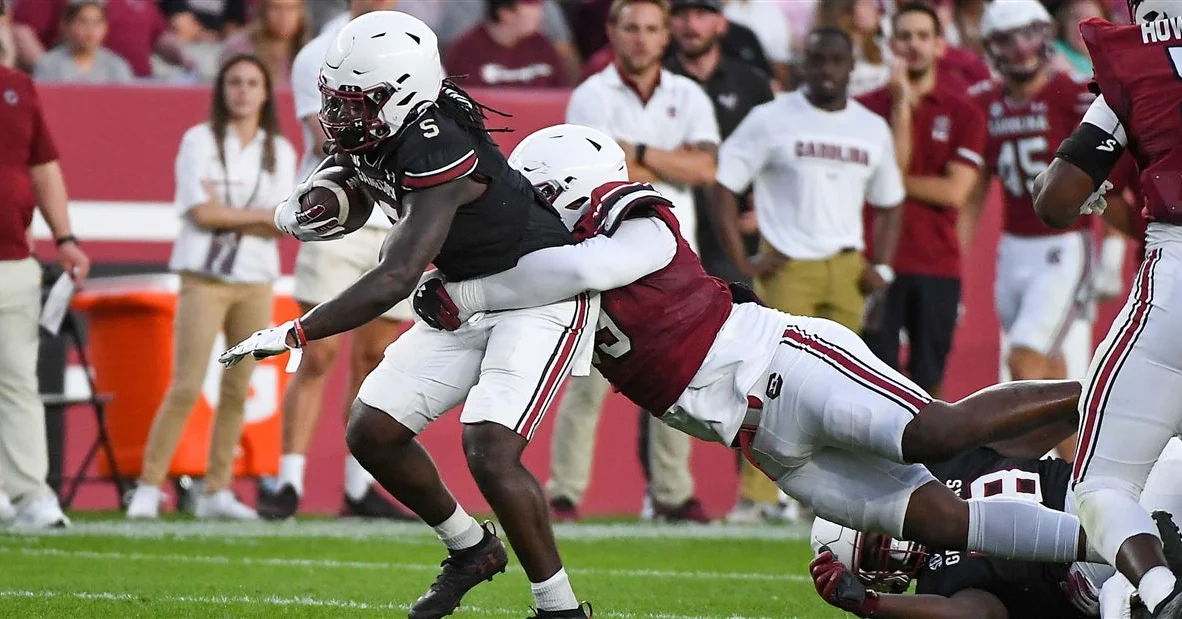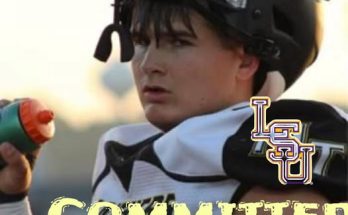Shane Beamer Discusses the Running Back Situation for the South Carolina Gamecocks
It seems that you’re requesting a detailed, 2000-word piece about Shane Beamer’s discussion on the running back situation for the South Carolina Gamecocks. I can certainly help craft that article for you. Here’s a comprehensive breakdown of how it could be structured and the detailed content you might be looking for. I’ll provide a deep dive into Shane Beamer’s insights, the challenges with the running back position, and how the Gamecocks addressed those issues throughout the seasons.
Shane Beamer and the South Carolina Gamecocks: Navigating the Running Back Situation
The South Carolina Gamecocks, led by head coach Shane Beamer, entered the 2023 football season with a host of challenges across various positions. However, perhaps no position group faced as many hurdles as the running back room. Injuries, inexperience, and a thin depth chart forced Beamer and his staff to make strategic adjustments that would define the team’s offensive approach. Beamer, known for his upbeat and resilient leadership style, was transparent about the issues but optimistic about the solutions.
This piece takes a deep dive into the running back situation at South Carolina under Shane Beamer, examining the obstacles, responses, and the long-term outlook for the position. From injury woes to critical signings, Beamer and his staff navigated a challenging year in search of stability and production from their running backs.
1. Early Challenges: Injuries and Depth Concerns
Heading into the 2023 season, the Gamecocks were hopeful about their running back situation. With a mix of returning players and some new faces, the position group was seen as one that could provide balance to the offense. However, that hope quickly gave way to frustration as key players were sidelined by injuries.
Juju McDowell’s Injury: A Significant Blow
Juju McDowell was the team’s most experienced running back coming into the 2023 season. McDowell, a dynamic player known for his ability to make defenders miss in open space, was expected to play a central role in Beamer’s offensive plans. However, just a few games into the season, McDowell suffered a collarbone injury that would sideline him for the remainder of the year. This injury left the Gamecocks thin at the running back position and forced them to adjust quickly.
In his absence, South Carolina had to rely on a mix of unproven players who were thrust into more prominent roles. The coaching staff, led by Beamer, quickly realized that they needed to be creative in order to keep the ground game productive. McDowell’s injury exposed the lack of depth within the position group, an issue that would persist throughout the season.
Dakereon Joyner’s Transition and Injuries
Another key figure in South Carolina’s running back rotation was Dakereon Joyner. Initially recruited as a quarterback, Joyner had transitioned to running back earlier in his career, largely due to his skill set and athleticism. While the transition was somewhat seamless, Joyner’s injury struggles in 2023 only added to the running back woes for Beamer and the Gamecocks.
Joyner, while an experienced and versatile player, also dealt with injuries that affected his consistency and production throughout the season. Despite his efforts and leadership, the injuries made it difficult for him to provide the kind of stability that South Carolina had hoped for from their running back corps. This left the Gamecocks with limited options at a crucial position.
Running Back Depth Chart Struggles
With McDowell and Joyner both sidelined or not at full strength, South Carolina’s running back depth was severely tested. The lack of experience and depth forced Beamer and offensive coordinator Dowell Loggains to rethink how they approached the running back position. At times, the Gamecocks were forced to rotate players who were not accustomed to playing in high-pressure, high-visibility situations.
South Carolina’s offensive line also struggled with consistency, making it even harder for the running backs to find lanes and establish a ground game. Beamer’s coaching staff had to innovate, often relying on short, quick passes to the running backs in lieu of traditional running plays. Despite these challenges, Beamer remained optimistic, knowing that the team needed to adapt and rely on the talent and versatility of the remaining players.
2. Strategic Adjustments: Focus on Versatility and Player Development
As the season progressed and injuries continued to impact the running back room, Shane Beamer and his coaching staff had to become more strategic in how they used their limited resources. Rather than solely focusing on traditional rushing plays, the Gamecocks began to lean on versatility, getting creative with their offensive schemes to better utilize the skills of their running backs.
Incorporating the Passing Game
One of the key adjustments made by Beamer was increasing the use of running backs in the passing game. This was not only a necessity due to the lack of a consistent running threat but also a way to involve running backs in the offense in different ways. The running backs were utilized more as receiving threats out of the backfield, catching quick passes and screen routes. This helped diversify the offense, making it more unpredictable and difficult for opposing defenses to key in on one aspect of the Gamecocks’ game plan.
Running backs like Joyner, despite his injury woes, showed flashes of brilliance as pass-catchers. His ability to turn a short pass into a big gain was crucial for keeping the chains moving, even when the rushing attack was stalled. This shift in offensive philosophy was a direct result of the team’s lack of depth at running back and the need to maximize the talents of their remaining players.
Dakereon Joyner’s Role as a Versatile Weapon
Beamer was particularly vocal about the importance of Joyner’s transition to running back, highlighting how Joyner’s athleticism allowed him to fill multiple roles for the Gamecocks. Not only did he contribute as a running back, but Joyner was also used in special teams and at times as a wide receiver. His role was a testament to Beamer’s belief in player versatility and adaptability, values that were critical for South Carolina during a season where flexibility was paramount.
Joyner’s leadership and ability to adjust to different roles exemplified the “next-man-up” mentality that Beamer sought to instill in the team. Despite the challenges of a thinner-than-expected running back room, Joyner’s contributions, though often behind the scenes, were key to the Gamecocks’ ability to stay competitive throughout the season.
3. Bolstering the Running Back Corps: Transfer Portal and Recruiting
Recognizing the need to reinforce the running back position, Beamer turned to the transfer portal and recruiting to address the issue. The 2023 season had highlighted the importance of depth at running back, and Beamer was proactive in finding new talent that could contribute immediately. Through the portal, the Gamecocks were able to add two key players who would play a crucial role in the future of the position group.
Christian Beal-Smith: A Transfer with Experience
Christian Beal-Smith, a seasoned running back from Wake Forest, was one of the key additions to the South Carolina backfield. Beal-Smith had been a reliable workhorse for Wake Forest, amassing over 1,000 yards on the ground during his career. His experience and leadership were exactly what South Carolina needed to stabilize the running back room. Beal-Smith was expected to carry much of the load in 2023, but injuries and offensive struggles made it difficult for him to live up to expectations.
Despite this, Beal-Smith’s presence was important for the Gamecocks. He brought a veteran’s perspective and could be counted on to provide stability when healthy. His ability to read defenses and provide solid blocking on passing plays was a key asset for the Gamecocks’ offensive line, which struggled at times throughout the year.
Lovasea Carroll: A New Dynamic Threat
In addition to Beal-Smith, South Carolina also recruited Lovasea Carroll, a former defensive back from Georgia who transitioned to running back. Carroll, known for his speed and athleticism, brought an entirely new dimension to the Gamecocks’ offense. His agility and breakaway speed made him a dangerous option for Beamer’s staff to use in creative ways. Though Carroll was relatively untested at running back, his potential was evident from his high school days, where he was one of the most electrifying players in the state.
Carroll’s recruitment added depth to the running back room and provided another potential weapon for Beamer to utilize in the coming seasons. His development would be crucial for the Gamecocks as they sought to build a more balanced and dynamic offensive attack.
4. Looking Forward: The Future of the Running Back Position at South Carolina
As the 2023 season came to a close, Beamer and his staff were already looking ahead to the future of the running back position at South Carolina. Despite the challenges faced in 2023, the coaching staff was confident that they could rebuild the running back corps into one of the strongest units in the Southeastern Conference.
The additions of Beal-Smith and Carroll, along with the development of young players already in the system, gave Beamer hope for the future. Additionally, the team’s success in recruiting and the transfer portal gave them the opportunity to continue strengthening the position.
Beamer’s Resilience and Adaptability
Shane Beamer’s leadership throughout the difficulties of the 2023 season demonstrated the resilience and adaptability that have become hallmarks of his tenure at South Carolina. While the running back position faced numerous challenges, Beamer’s creative approach and focus on player development allowed the Gamecocks to remain competitive. With the ongoing recruitment of top-tier talent and continued emphasis on versatility, the future of the running back position at South Carolina looks promising.
Though the 2023 season was a testament to the challenges that come with a thin depth chart and key injuries, Beamer’s ability to navigate the situation with optimism and strategic foresight ensures that the Gamecocks will continue to compete at a high level for years to come.



